Notable Members
Notable members are those that have served the Philadelphia Section in one shape or another. Some notable members have only been a member of the Philadelphia Section while others have been a member of multiple sections but have left a huge impact on our section. The list below is in no way a complete list of members that have made a difference on the Philadelphia Section.
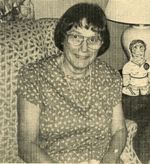
Dorothy Hoffman
Dorothy M. Hoffman, SWE Fellow and Life Member, joined the Society in 1956 and was strong supporter of both the Philadelphia and New Jersey Sections. Though she lived and worked in New Jersey, she opted to be part of the Philadelphia Section. From the 1950s through the mid-1970s, a span of nearly 20 years, she served in some section office, including two terms as President. From 1980 to 1989 she served on the Society’s Board of Trustees. Dorothy was elected a SWE Fellow in 1984. In 1989, she was named to the Philadelphia Section Hall of Fame for her many contributions to the Section. Dottie was instrumental in having RCA become an early Corporate Member of the Society and providing funding for the RCA scholarships awarded by SWE for electrical engineering students. Upon her death, a bequest to the Society provided for the development of new career guidance programs and the funding for the Dorothy M. and Earl S. Hoffman Scholarship awards.
Dottie had a long-standing interest in education and career guidance. She was an active participant in career guidance activities sponsored by the Engineering and Technical Societies Council (ETSCO) and was a speaker at Engineers’ Week programs for students, parents, teachers, and guidance counselors. She also served terms as ESTCO President and as Treasurer.
Originally from New York City, Dottie attended City University of New York. She later received a BS in Chemical Engineering from Rensselear Polytechnic Institute in 1947 and an MS in Chemical Engineering from Bucknell University in 1948.
She spent a year at General Electric Research Laboratory in Schenectady, NY before she and her husband moved to Philadelphia when she joined the International Resistance Co. Her primary focus at work was the development of evaporated-metal-film resistors. In 1962, Dottie joined the RCA David Sarnoff Research Laboratory in Princeton, NJ, remained there until her retirement in 1992, and then worked as a consultant until 1996. At Sarnoff Labs, she was in charge of the Thin Film Technology Service Group which developed evaporative coatings used on products such as solar cells, Nichrome resistors, kinescope parts, optical filters, and infrared imaging devices. She was the recipient of the prestigious RCA Laboratories Outstanding Achievement Award in 1968 and the Video Disc Achievement Award in 1973. Dorothy M. Hoffman also holds three patents, has over 17 publications related to vacuum technology, and is an editor of the HANDBOOK OF VACUUM SCIENCE AND TECHNOLOGY that was published in 1998 by Elsevier, Inc.
Dottie was a founding member of the Delaware Valley Chapter of the American Vacuum Society (AVS). She was elected the first woman President of AVS in 1974. She also served on the Program Committee, was Society Clerk, and Chairman and member of the AVS Board of Trustees. In 1982, she was elected AVS Honorary Member, the same year she was also elected Central New Jersey “Engineer of the Year” by the Central New Jersey Engineering Council. Upon her death, a bequest was made to AVS to fund The Dorothy M. and Earl S. Hoffman Scholarships that were established in 2002 to recognize and encourage excellence in graduate studies in the sciences and technologies of interest to AVS.
Dorothy M. Hoffman was born on September 12, 1915 and died on November 20, 1989.
Sources:
Biosketch for SWE Hoffman Program and Dorothy and Earl Hoffman Scholarships
In Memoriam
SWE Fellow Citation
Foley, Eileen. “Engineering Pays Off at Work and Home.” THE EVENING BULLETIN. 26 September 1961.
AVS Dorothy M. and Earl S. Hoffman Award, http://www.avs.org/news.popup.aspx?article=231
SWE Dorothy M. and Earl S. Hoffman Scholarship, http://www.aie.org/Scholarships/detail.cfm?D=16798
D.M. Hoffman, B. Singh, and J.H. Thomas III (eds), Handbook of Vacuum Science and Technology, Academic press, 1998. http://www.science-direct.com/science/book/9780123520654
Philadelphia Section Newsletters
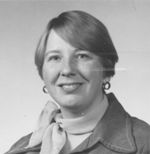
Gloria Jean Hoppert
G. Jean Hoppert, SWE Fellow and Life Member, was an active member of the Philadelphia Section for only a short time from 1978 to the early 1980s when she became a Charter Member of the Lehigh Valley Section that split off from the northernmost areas of the Philadelphia Section. However, she played a significant role in revitalizing the Philadelphia Section and energizing the Lehigh Valley Section. She used her experience as chair of the national Student Conference in 1977 to lead members from the Philadelphia, Lehigh Valley, and Twin Tiers Sections to work together to put on a joint professional development conference designed to address choices to be faced by women engineers during periods of transition in their careers. The outcome of this effort was the Career Conference: Transition to Management, or “the Pocono Conference,” that was held in April 1983 and open to all SWE members. At this time, Jean was also serving on the Society’s Long Range Planning Committee that was working out issues associated with restructuring the Society to a regional organization; several informal meetings held during the conference worked out the rationale for the number and composition of the regions.
In addition to her upbeat and positive attitude, Jean was always welcome at any SWE meeting or event. As she worked for a chocolate company, M&M Mars, Inc., she usually had samples to distribute. Often Jean would have her young son and daughter along, too. For the longest time, her son thought that all engineers were women. She was named a SWE Fellow in 1991. At SWE National Conventions Jean and her husband Hershel are often found in the Over-the-Hill suite.
Jean was drafted into SWE in 1974 when she was sponsored as a Corporate Member by Proctor and Gamble in Cincinnati, OH, and she has been an active member ever since. She became a Charter Member of the South Ohio Section and served as Secretary, President, and Section Representative. As a new mother, she chaired the 1977 National Student Conference. Later that year she moved to a new job with Schlitz in Milwaukee and became active in the Milwaukee Section for a year. She joined M&M Mars, Inc. in 1978 and worked with various subsidiaries of the company in Elizabethtown, PA, Columbus, OH, Henderson, NV and Chicago IL, until her retirement in 2003 from Master Foods, USA. At the national level, Jean served as New Section Coordinator, Student Activities Coordinator; and Society Secretary (FY78 and FY79) and is currently involved as a member of the Las Vegas Valley Section and on national outreach and professional development committees. She is also involved in running FIRST programs which include JrFLL, FIRST Lego League, FIRST Tech Challenge and FIRST Robotics competitions for kindergarten through 12th grade students.
G. Jean Hoppert graduated from the University of Michigan in 1971 with a BS in Chemical Engineering. She was encouraged to study engineering by her high school counselor. She earned an MBA from Xavier University in 1975. She is a licensed Professional Engineer in Pennsylvania, Wisconsin, Illinois, and Nevada. She and her husband Herschel have two children,a son Hadden and a daughter Freya.
Sources:
SWE Fellow Citation
Personal memories and phone conversations – Jean Hoppert, Barbara Faust
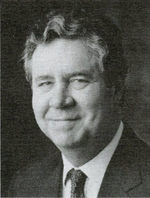
Ralph Klesius
Ralph Klesius was the 1993 recipient of the Rodney D. Chipp Memorial Award given to men or companies that contribute greatly to the advancement of women in the engineering profession. Ralph Klesius was instrumental in the hiring and promotion of women engineers in his role as the Senior Vice President of Delmarva Power & Light Company, later Conectiv Power Delivery. Ralph worked to create the Conectiv Power Scholarship to encourage women and minorities to pursue careers in engineering. In addition, he worked closely with regional engineering universities to promote women in engineering programs and assisted women in obtaining summer jobs at Conectiv. Ralph donated the monies he received in conjunction with the Rodney D. Chipp Memorial Award to the SWE scholarship fund. When he retired a few years later he requested that, in lieu of other gifts, donations also be made to the SWE Scholarship Fund. These donations from individuals and companies were added to the original funds provided Ralph and together Conectiv and SWE decided to endow a scholarship in Ralph’s name. When the DelMar Peninsula Section split off, all of the Ralph Klesius Fund went to DelMar as part of the Treasury Split agreement.
Sources:
“Klesius Scholarship to benefit future engineers.” INSIGHT. March 1999.
SWE Archives – 1993 Rodney Chipp Memorial Award News Release.
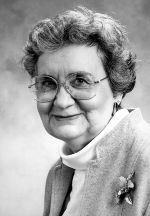
Nancy Redgate
Nancy Redgate, a SWE Fellow and Life Member, joined SWE in 1968 and is a Charter Member of the University of Delaware Student Section. After graduating in 1970, she became a member of the Philadelphia Section, where she was an active member until she moved to Georgia during her term as Section President in 1977-1978. She also served as Section Representative from 1973-1975 and as a member of several national committees. She was elected to the College of Fellows in 1990.
Nancy often referred to SWE as “a family affair,“ with three of the four family members involved in the Society. In 1977 she was a Senior
Member, her husband Bill, an architect, has just been accepted as a Senior Member, and her daughter Diana, a physicist, was an Associate Member. As her son Bill was then studying engineering at the University of Delaware, she said that “there is still hope for a total commitment by the Redgates.”
Prior to completing her Bachelor of Civil Engineering degree at the University of Delaware in 1970, she had already begun career while working as a general draftsman in her husband’s architectural firm. After receiving her degree, she worked for the Department of Public Works of New Castle County, Delaware where she was involved in the development of the storm water management code and later became Chief of the Subdivision Section whose mission was to develop and enforce environmental regulations on new developments. She later worked as a civil engineer for the U.S. Fish and Wildlife Service before going on to join the Environmental Protection Agency as an environmental engineer. While at the EPA, Nancy worked on issues related to environmental regulations, solid waste management, and regulation of Superfund sites. In particular, she served as the coordinator to ensure environmental compliance for Tennessee Valley Authority facilities within Region IV.
Nancy M. Redgate is a registered Professional Engineer in Pennsylvania, Delaware, Maryland, and Georgia. She was the Metro Atlanta Engineer of the Year in Government in 1981, the first female Treasurer of the Delaware Chapter of the American Society of Civil Engineers, the first female
President, Treasurer, State Director, and Chapter Director of the Sandy Springs National Society of Professional Engineers, as well as the first female Treasurer and Vice President of the Georgia Engineering Foundation. She received Master of Public Administration degree from Georgia State University in 1981.
Sources:
SWE Fellow Citation
1981 Engineer of the Year in Goverment Write Up
“Philadelphia SWE members make section ‘a family affair.'” SWE NEWSLETTER. October 1977.

Helen Smith
Helen Smith joined the Philadelphia Section in 1953 and immediately became involved as Membership Chair, an office she held for four years. She also served as Section Chairman in 1955-1956, Recording Secretary, and Programs Chair.
For ten years, Helen gained an extensive mechanical background through having run an appliance sales and service business with her husband. She was then employed as a Senior Engineer with the Philco Corporation, Philadelphia, in the Engineering Department for Preliminary Designs of Domestic Refrigeration and Freezers. She was the first woman draftsman in the engineering department. During this time she designed and developed preliminary samples of appliances from crude sketches or verbal descriptions, and she contributed original ideas which had led in many cases to the improvement of the final design.
In 1951, Helen received one of the top achievement awards given to engineering personnel at Philco. This was the first year such awards were given. She received a second such award in 1953. She was a member of the American Society of Refrigeration Engineers. Helen holds two patents on refrigerators.
Sources:
Philadelphia Section Master Officer List
SWE JOURNAL, Volume 4 Number 3
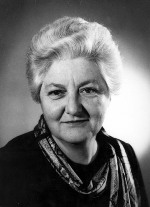
Alice Stoll
Alice M. Stoll, 1969 Recipient of the SWE Achievement Award and Life Member, has been in the Philadelphia area since she entered employment with the federal government in 1953 as a research physiologist in the Aerospace Medical Research Department of the Naval Air Development Center in Warminster, PA. She received the Society’s highest honor “In recognition of her significant contributions in the development of fire-resistant fibers and fabrics, based on her pioneering studies of heat transfer by flame contact.” In 2000 she funded one of the section’s scholarship awards for college, students and she made the presentation at the Awards Banquet held during the Society’s and the Section’s 50th Anniversary.
Alice Stoll grew up in the southeastern region of New York State. She attended Hunter University in New York City and earned a Bachelor of Science degree in chemistry and physics 1938. Upon graduation she worked as a research assistant in the field of allergy, basal metabolism and infrared spectrophotometry at the Cornell University Medical College. While she was a research assistant in 1943, she invented a liquid cell for the infrared spectrophotometer. That same year she enlisted in the U. S. Navy. While in the Navy, she attended Officer Candidate School and held the positions and ranks of Pharmacists Mate 2 Class Ensign, Hospital Corps and Lieutenant (J.G.). In 1946 she was released from active duty to serve in the Naval Reserves.
She then returned to Cornell University Graduate School at the Medical College and received a Master of Science degree in physiology and biophysics in 1948. She continued her affiliation with the Medical College as a teaching assistant and as a researcher in physiology and instrumentation until 1953. During this time she obtained a patent on a panradiometer and invented a thermister radiometer. She conducted research on the cardiovascular effects of acceleration until 1956 when she was promoted to a special technical assistant to the research director. She carried out research on thermal tissue damage and pain sensation. As her career advanced to Manager of the Thermal Division in 1960 and Manager of Biophysics and Bioastronautics Division in 1964, she or her staff conducted studies in the field of thermal radiation, thermal effects on skin, protective materials and spacecraft atmospheres.
Alice Stoll made technical contributions in the field of heat transfer, biophysics, and engineering. Her contributions consisted of a revolutionary approach in the protection of military and civilian personnel against skin burns due to flame contact and thermal radiation. She invented an
apparatus and method of analysis of heat transfer by flame contact, which provided previously lacking basic knowledge on the production and prevention of thermal burns. Thus it became possible for the first time to rate different materials as to their ability to protect humans from thermal pain and blisters. Formerly, fire-retardant treatments of fabrics were thought to provide the ultimate in protective clothing for ordinary wear. Her work demonstrated that fabric constructions of inherently fire-resistant fibers were not only feasible but also far superior to treated fabric. Her efforts have resulted in acceptance of the material, Nomex, (a product of DuPont) for standard issue fire-resistant clothing in all branches of the armed services. The material is used in hospitals for bed linens, sleep-wear for paraplegics, protective clothing for race car drivers and fireman, thermal underwear, and ironing board covers.
It was as manager that Alice Stoll was recognized by her peers. In 1965 she became an American Society of Mechanical Engineers (ASME) Fellow and won the Federal Business Association’s Civil Servant of the Year award. She was an American Society for the Advancement of Science Fellow and a Charter Member and Associate Fellow in the Biophysical Society. The Federal Personnel Council of Philadelphia recognized her by presenting her a Significant Achievement award in thermal research. She was appointment as Chair of Technical Committee K-17 of the Heat transfer Division of ASME from 1965 to 1968 and in 1969 she won the SWE Achievement Award. The military also recognized the importance of her work by writing a “Letter of Commendation” in the Navy Officer’s Jacket, a military publication, for leadership in organizing ONR Research Reserve Company 4-12 while serving as Officer-in-Charge of a panel of USNRR Company 4-2.
Alice Stoll was also a Fellow of the Aerospace Medical Association and a member of the American Physiological Society, the American Geophysical Union, and Arctic Institute of North America. In her life time she authored or coauthored over 45 published technical papers.
In addition to her work and professional affiliations, she found time for travel, gardening and athletic endeavors.
Sources:
SWE Achievement Award Package
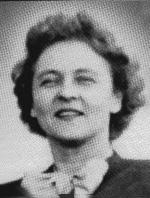
Maria Telkes
Dr. Maria Telkes, a SWE Pioneer, first recipient of the SWE Achievement Award, and Life Member, was active member in the Philadelphia Section from 1964, when she lived in Allentown and was Director of Research and Development for Cryo-Therm, through at least 1977 when she retired from the Institute of Energy Conversion at the University of Delaware. Maria was a lively conversationalist at Section dinner meetings at the Engineers’ Club of Philadelphia, and she frequently expounded on the virtues of solar power. Section members were treated to behind-the-scene technical tour of the solar-powered house that she developed at the University of Delaware. Sometime after retiring, she moved to North Miami, FL and remained active as a consultant until 1993.
In 1952, Dr. Maria Telkes received the first SWE Achievement Award “In recognition of her meritorius contributions to the utilization of solar energy.” Her work in utilizing solar energy included developing solar distillers to convert sea water to fresh water and thermoelectric generators for a variety of terrestrial and space applications. In 1948 she and architect Eleanor Raymond developed the first solar-heated home. Radiated heat based on the latent heat of fusion of salt-hydrates was used to provide “toasty” heating for a five-room house in Dover, MA through the winter. In 1960 she completed the solar energy center at Princeton, NJ, which included solar-heated rooms, swimming pool and labs, solar water heaters, dryers for fruits and vegetables, and solar cooking stoves. Maria researched and developed solar ovens and solar heaters using air and liquid heat exchangers; she experimented with stoves that used solar energy for heat, but were simple and cheap enough to be used by villagers in poor, arid regions. She holds numerous patents for solar devices.
Maria was born in Budapest in 1900 and built her own little chemistry lab1 when she was ten years old. She became interested in using solar energy for various practical applications during her first year at the University of Budapest when she came across a book, Energy Sources of the Future by Kornel Zelowitch, which described various experiments in solar energy that were going on at the time, mostly in America. Maria first came to the United States in 1925 to visit a cousin. In 1927 she began work as a biophysicist at the Cleveland Foundation in Ohio, where she collaborated with Dr. George Cril to develop a photo-electric device capable of recording energy emanations from the human brain. She became a US citizen in 1937 and subsequently worked as a research engineer at Westinghouse Research Laboratories in East Pittsburgh, PA (1937-1939), the United States Government, in solar energy conversion at the Massachusetts Institute of Technology (13 years), solar energy projects at New York University (five years), Princeton University, and the University of Delaware. She retired in 1977 as a senior scientist at the University of Delaware, but remained active as a consultant until about three years before she died in Budapest on December 2, 1995 on her first visit to Hungary in 70 years.
Dr. Maria Telkes received a PhD in Physical Chemistry from the University of Budapest where she started her career as an instructor at the school. She was also a member of the American Chemical Society, the Electrochemistry Society, and Sigma Xi (Scientific Research Society).
Sources:
Fields, Sidney. “Harnessing the Sun.” DAILY NEWS. 19 June 1964.
Saxon, Wolfgang. “Obituary.” NEW YORK TIMES. 13 August 1996.
SWE Award Committee Citation, 15 March 1952
SWE Archives – Biographical Notes
Personal memories – Doris McNulty, Barbara C. Faust

